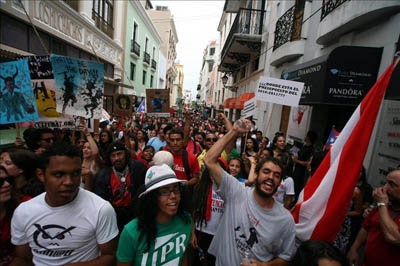Students on strike in the University of Puerto Rico system have settled in for the long haul as the island struggles to come to a resolution regarding its massive debt crisis.
The Congress-approved, Obama White House appointed fiscal control board charged with righting Puerto Rico’s finances first proposed drastically reducing UPR’s annual budget on February 28. Under the fiscal control board’s proposal, the university system’s government subsidy would be reduced by more than half to $450 million by 2021. UPR is largely dependent on the government subsidy for maintenance and operations, so a reduction of that size would have significant consequences for the university system.

Students fear that the budget cuts would decimate public higher education in Puerto Rico. “If the budget cuts go through, we will see hundreds of students leaving the country and families not having their children go to universities,” said Victor Torres, an undergraduate journalism student at UPR Rio Piedras. Currently, approximately 58,000 students attend UPR, making it the largest provider of higher education on the island.
Although there are private institutions of higher education in Puerto Rico, the cost of attending would be prohibitive for many. According to the Department of Education’s College Scorecard, the average annual cost of UPR Rio Piedras is $2,318. By comparison, the Inter American University of Puerto Rico, a private institution serving the second largest number of students on the island, costs $7,626 on average.
“If you compare those numbers, you can see that many students will not be able to access education,” Torres said.
While the dollar amount may seem low to anyone accustomed to the prices of four-year schools in the U.S., the economic context on Puerto Rico is vastly different.















